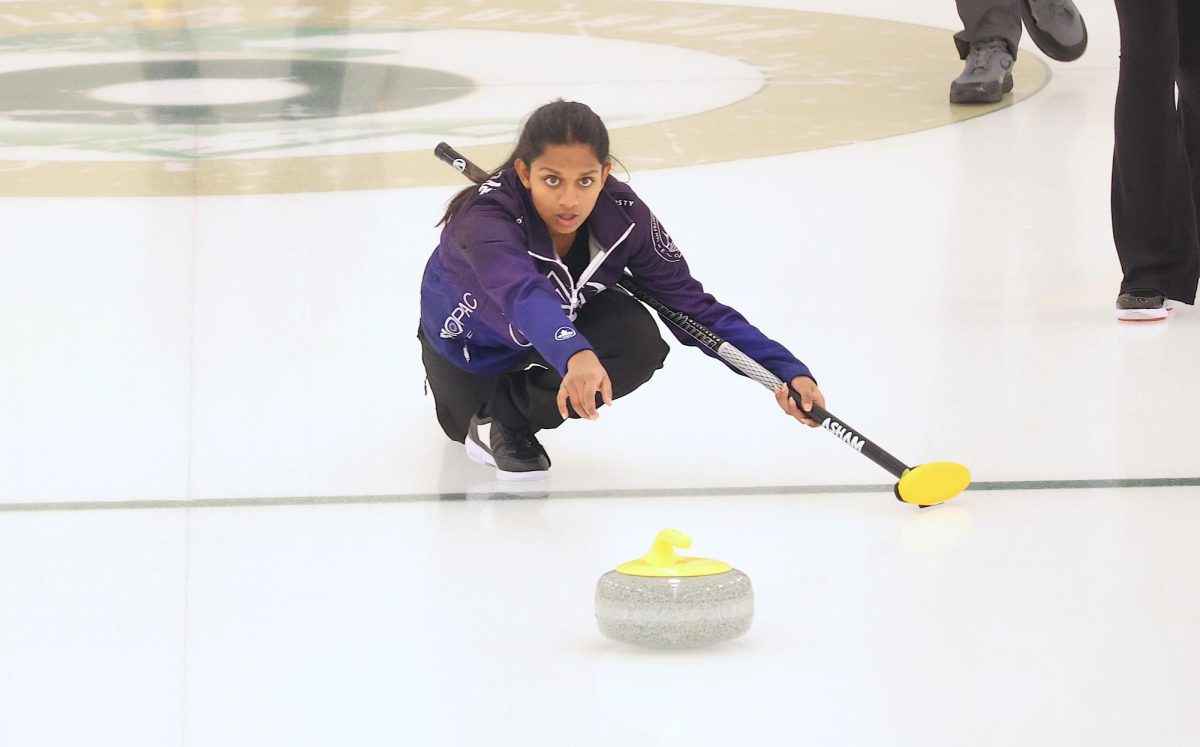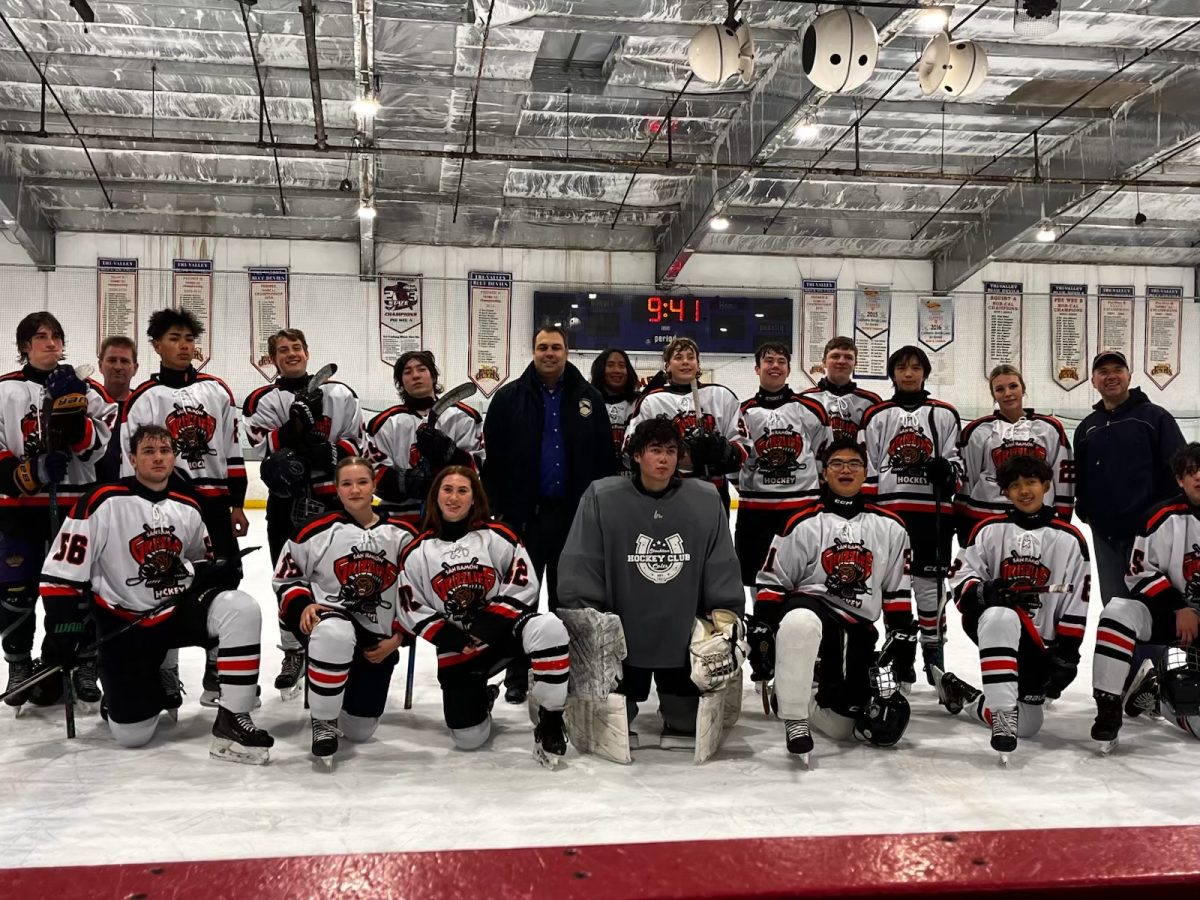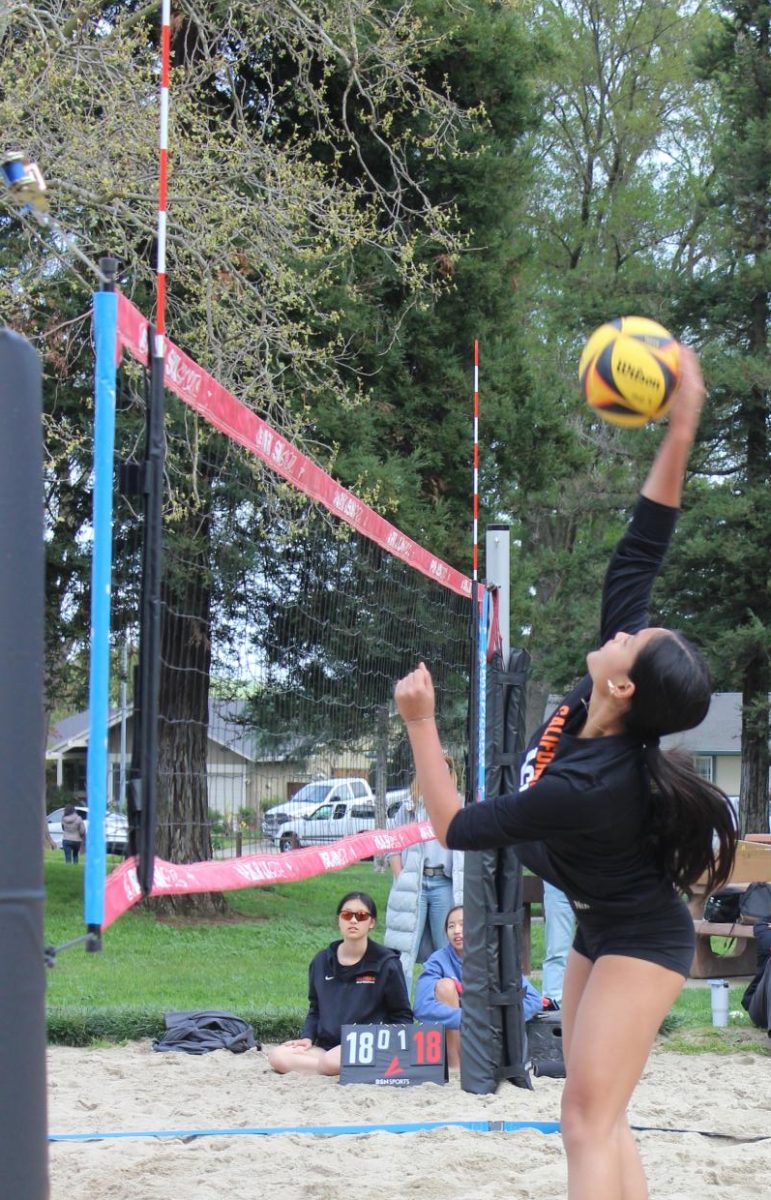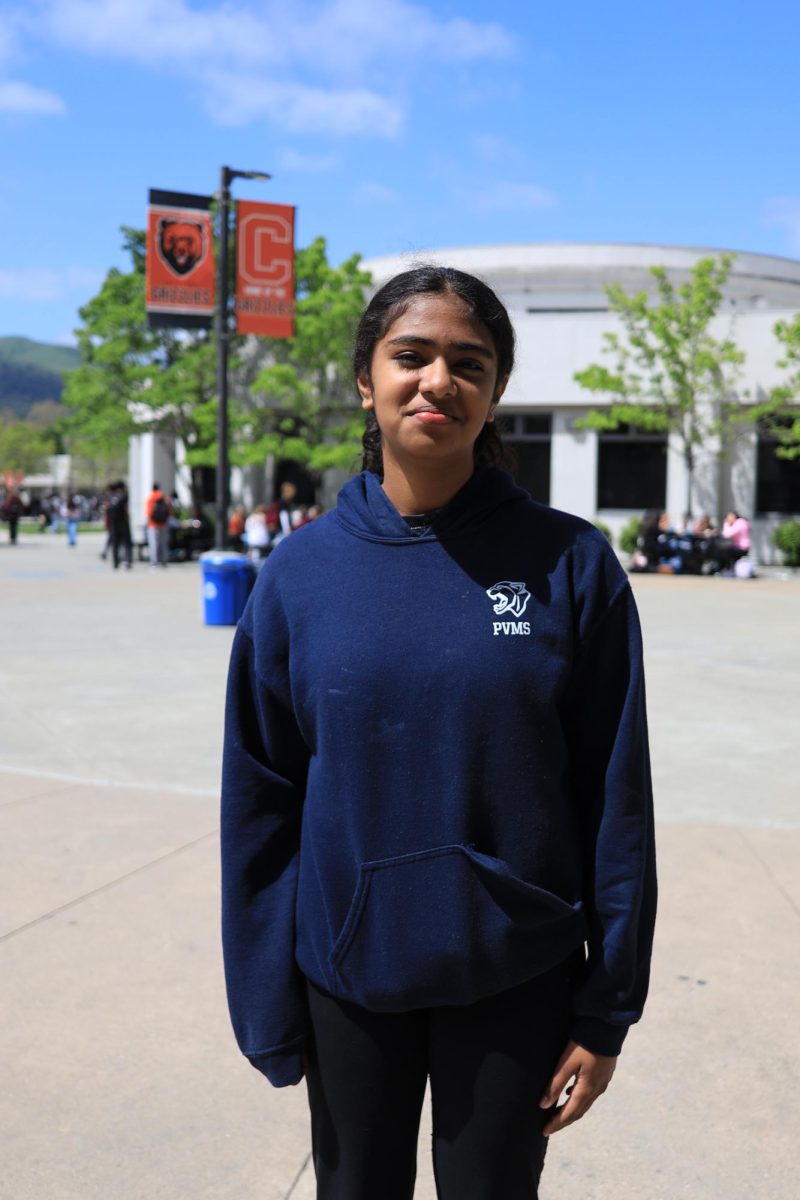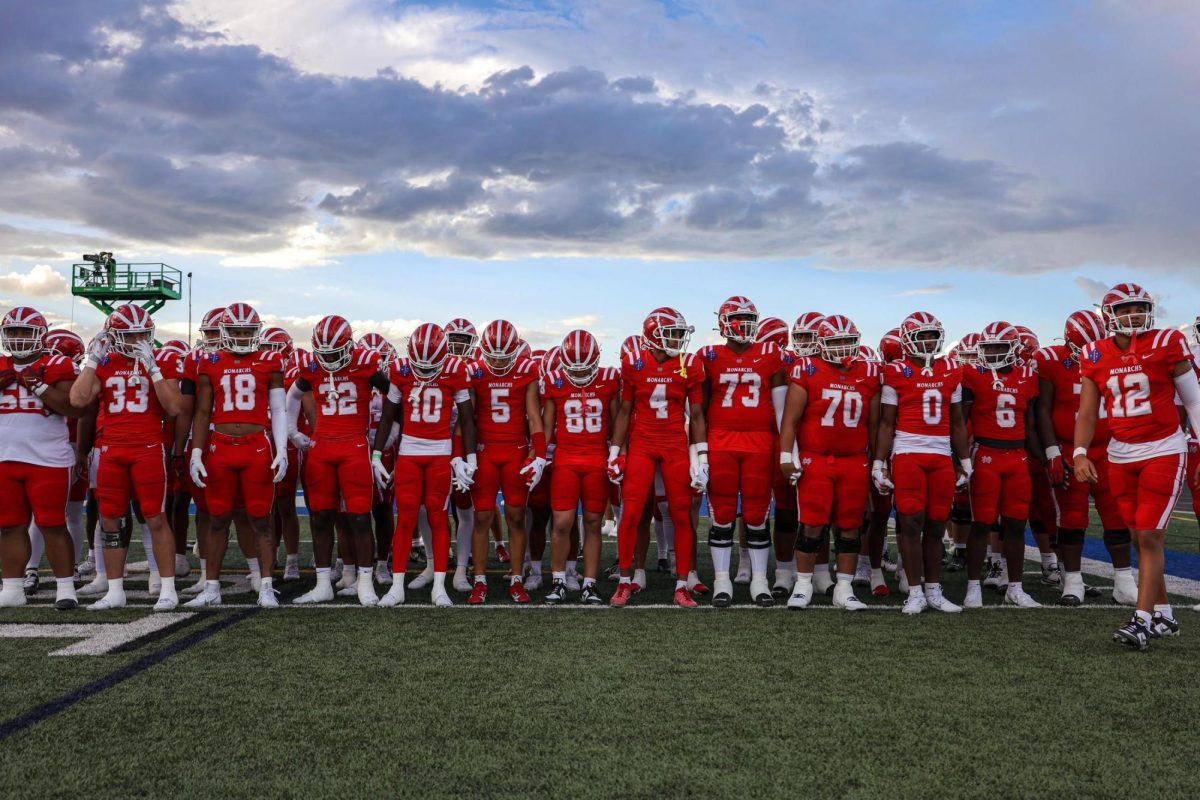Cal High freshman Krisha Umashankar crouches on the ice at the U18 Curling National Championships in Colorado.
Gripping a 45-pound granite rock and broom, her eyes are laser-focused on her target – a strategic spot amidst four concentric circles.
She thrusts the rock forward, imparting just the right amount of rotation and power. Her teammates, including Cal freshman Srihasini Malladi, rush in front, scraping the ice with brooms to adjust the rock’s trajectory.
But it’s not enough to secure the win. Umashankar and Malladi’s team from San Francisco, Team Keshwani, represented seven Western states in the competition from Jan. 11-14. The team lost their five games to more experienced teams from other regions.
Curling is traditionally a white, male-dominated sport common in colder Midwest states, but Team Keshwani was the newest and only non-white team in their division.
In fact, the entire West Coast has just three dedicated curling clubs. The San Francisco Bay Area Curling club that Team Keshwani is part of opened only two years ago. In contrast, Wisconsin alone has 26 dedicated curling clubs.
“Krisha and Srihasini have been curling for a year, and they’re up against girls who have been curling for 13, 14 years,” said Team Keshwani coach Dylan Bland, who is a teacher at College Park High in Pleasant Hill. “In our region, there was a lower representation of women curlers. And that’s one of the things that I was proud to see coming from our club, representing our region on the nationals team.”
The team went into the competition without high expectations. In their first game, they faced the team from Massachusetts that eventually won the championship. But Malladi said this loss didn’t discourage them.
“When we’re playing against these high level teams, our goal is to make them score less rather than us score more, so we were pushing them to smaller and smaller points,” Malladi said. “That wasn’t our strategy game wise, but that’s what we were able to do with the experience we had.”
Their efforts paid off and Team Keshwani quickly improved to match their high level competition.
“With every single game, we improved our shots way better than we were the last game,” Umashankar said. “We kept improving, the communication got better. First we won one point, then we won three points. And then we started gaining more and more.”
Eventually, when Team Keshwani faced a team from Ohio that would win silver, they were able to put up a fight, nearly tying the game before losing on a missed shot at the end.
Umashankar and Malladi were disappointed but happy how they played for their first time at the championship. They also know they have much room for improvement.
“Curling is one of those games where it’s easy to learn, but it’s incredibly hard to master,” Umashankar said. “You even see professionals still choke on the ice, or they don’t make their shots. That’s why it’s a sport where there’s always room for improvement, no matter how good you get, even on an Olympic level.”
The two began curling together just a year a through the San Francisco Bay Area Curling Club after the suggestion of Umashankar’s mom. Umashankar said because there wasn’t a lot of women representation in curling, especially in California, they had less competition and their application to represent the seven Mountain Pacific Curling Association states at Nationals was accepted more easily.
“There is a lack of diversity in this sport, whether it be race or gender,” said Team Keshwani skip Nisa Keshwani, a junior at Evergreen Valley High in San Jose. “Here in California, our Oakland facility puts a lot of emphasis on gaining more representation, but we still need to build our community and get more people involved in the sport that are women of color.”
Keshwani said curling has been primarily white dominated because of differences in access to resources and because there is little representation of people of color in curling on the world stage. Keshwani, who relies on a curling scholarship to pay for equipment, noted that starting curling can be very expensive because of the equipment.
When Keshwani was assembling her team, she said Umashankar and Malladi stood out to her because of their willingness to fail and keep getting back up.
“[Krisha and Srihasini] are very lively and energetic, but more than that they are very driven,” Keshwani said. “They challenge themselves, which made them perfect players for the national team.”
Curling is a sport that requires incredible precision and thoughtful strategy. Points are scored by throwing the rocks into certain areas within target zones, and one team’s rocks can displace the other team’s rocks.
The person acting as the skip decides the strategy and directs the thrower where to throw the rock. Throwing the rock takes technique and balance to slide out smoothly and fine motor control to manipulate its rotation and force. After the rock is thrown, sweepers then forcefully scrape the ice to manipulate its speed and trajectory by altering the friction of the ice so it reaches the target.
Before games, teams time how long it takes for the rock to glide a certain distance down to the millisecond in order to gauge the conditions of the ice.
“Just because it’s weird or not played as often, people think [curling] is not hard, but it definitely is,” Umashankar said.
Umashankar and Malladi have spent months honing the skills to curl, often making the trip to Oakland to the curling facility three times a week to practice for two to five hours at a time. Practices usually focused on technique for the first half and utilizing that technique in games in the second half.
The team also played in several bonspiels, or competitions, to prepare for Nationals.
“We started the game just as like, oh, it’s gonna be a fun game,” Malladi said. “But as soon as one of our teammates suggested we can go to nationals, like we have a shot, it made us really dedicated to improve in the game and caused us to practice way more often.”
Cal freshmen compete at curling national championship
Duo sweep past boundaries in Midwest- dominated sport
Andrew Ma, Editor-in-Chief
February 14, 2024
Freshman Krisha Umanshankar throws the rock in hopes of scoring at the U18 Curling National Chapionships. Umanshankar was part a San Francisco team that qualified.
More to Discover
About the Contributor
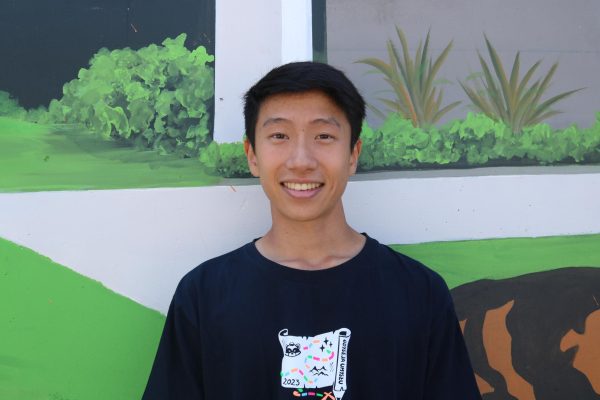
Andrew Ma, Editor-in-Chief
Senior Andrew Ma is Editor-in-Chief of The Californian Paper. Now that he is officially geriatric after writing for the paper since freshman year, he is eager to experiment with new forms of media, suggest more in-depth feedback, and report on bizarre stories. He also may unwittingly become a victim of a cruel and senseless senior identity theft scheme. In his free time, you’ll find Andrew baking desserts at high temperatures, playing Pokemon with his laptop at high temperatures, and running XC (also at high temperatures for some reason).
